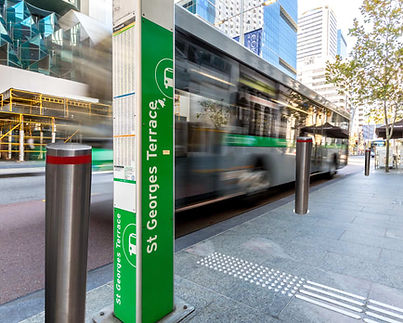
We don't import rubbish!
Our market is flooded with imported steel bollards that are creating mountains of landfill. Made from cheap steel and thinly powder coated, (suppliers pay around $10 for them) pretty soon they show their true nature, quickly fading, rusting and denting , costing you dearly in repeated replacements.
Please stop adding to landfill with this imported rubbish - consider good honest Aussie bollards, designed to last decades, not weeks. Not only because we should all buy local, and avoid landfill, but because you will save money - A LOT OF MONEY!
We have been in the business of designing and manufacturing bollards for decades- We don't just import cheap rubbish, we care about our products and our customers and we disgn bollards that last decades not weeks!







What makes us different?
There's a good reason we supply the market leaders.
It's because they care about safety, the environment and because we save them money, a LOT of money!
Do you realise that standard inground and surface mount bollards are NOT designed to withstand impact? Seriously - bollards are meant to stop vehicles but most dont't even do that, and no other bollard withstands severe impact and continues working -
UNTIL NOW
CITY OF PERTH
ZERO WASTE
BOLLARDS
You can now secure steel, stainless steel and Advanced Polymer Bollards on ZERO WASTE Foundations
The bollard, expensive concrete footings and surrounding paving are reusable impact after impact, saving thousands over the life of a development
Bollard and footings become re-usable impact after impact

ZERO DAMAGE
To Impact Recovery Rings when impacted
ZERO DAMAGE
To bollard when impacted
ZERO DAMAGE
To footing when impacted

1. Select your bollard
Choose from steel, stainless of Advanced Polymer (Standard units Safety Yellow but a range of colours are available) Ask for a colour chart
2. Select Installation
Bollards can be installed 350 mm depth or surface mounted using the Impact Recovery System and will be impact resistant at low to medium speed.
3. Select depth
350 mm depth is suitable for most situations and bollard is removable. If subject to severe impact such a utility vehicles or trucks - you will need 650 mm depth Foundation
4. Striping
If you want reflective striping you can select from Red or White reflective striping or MRWA striping.























































